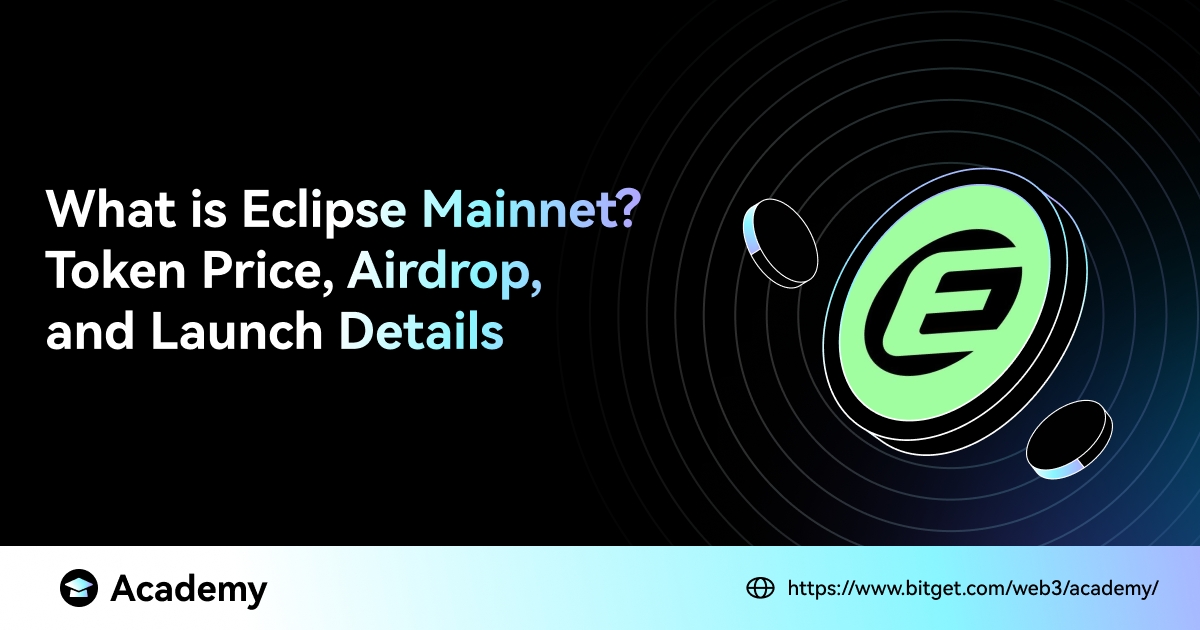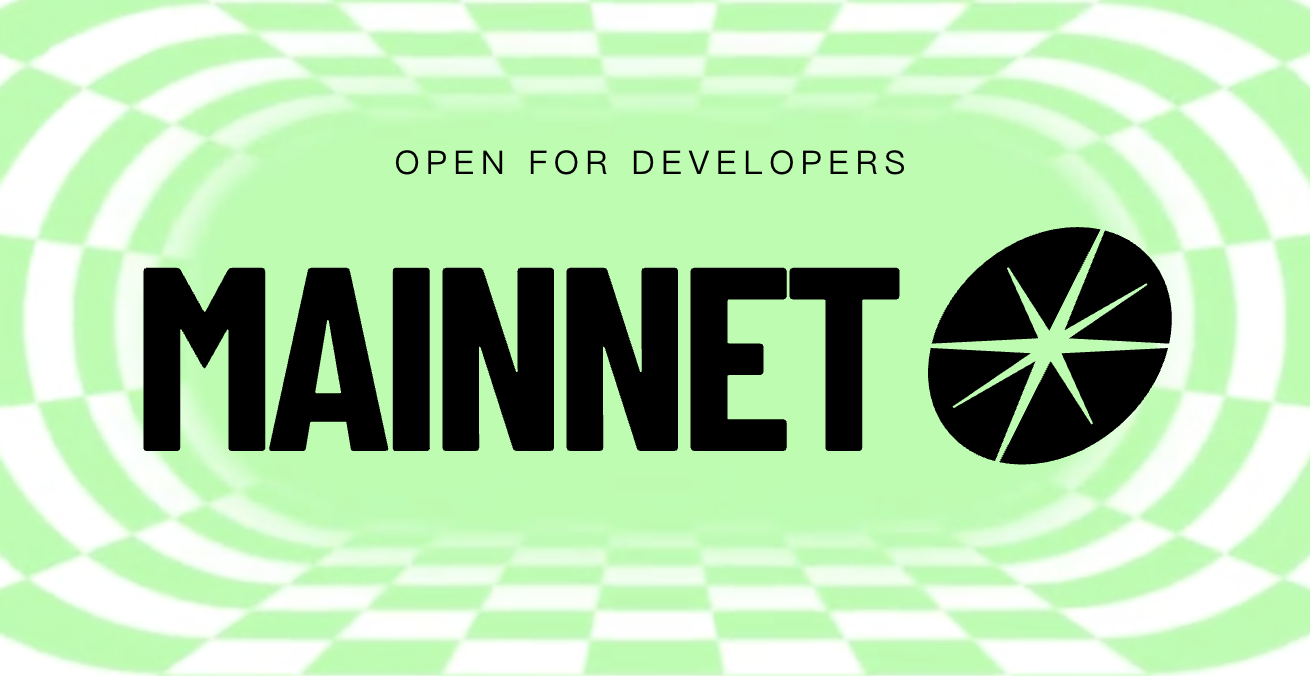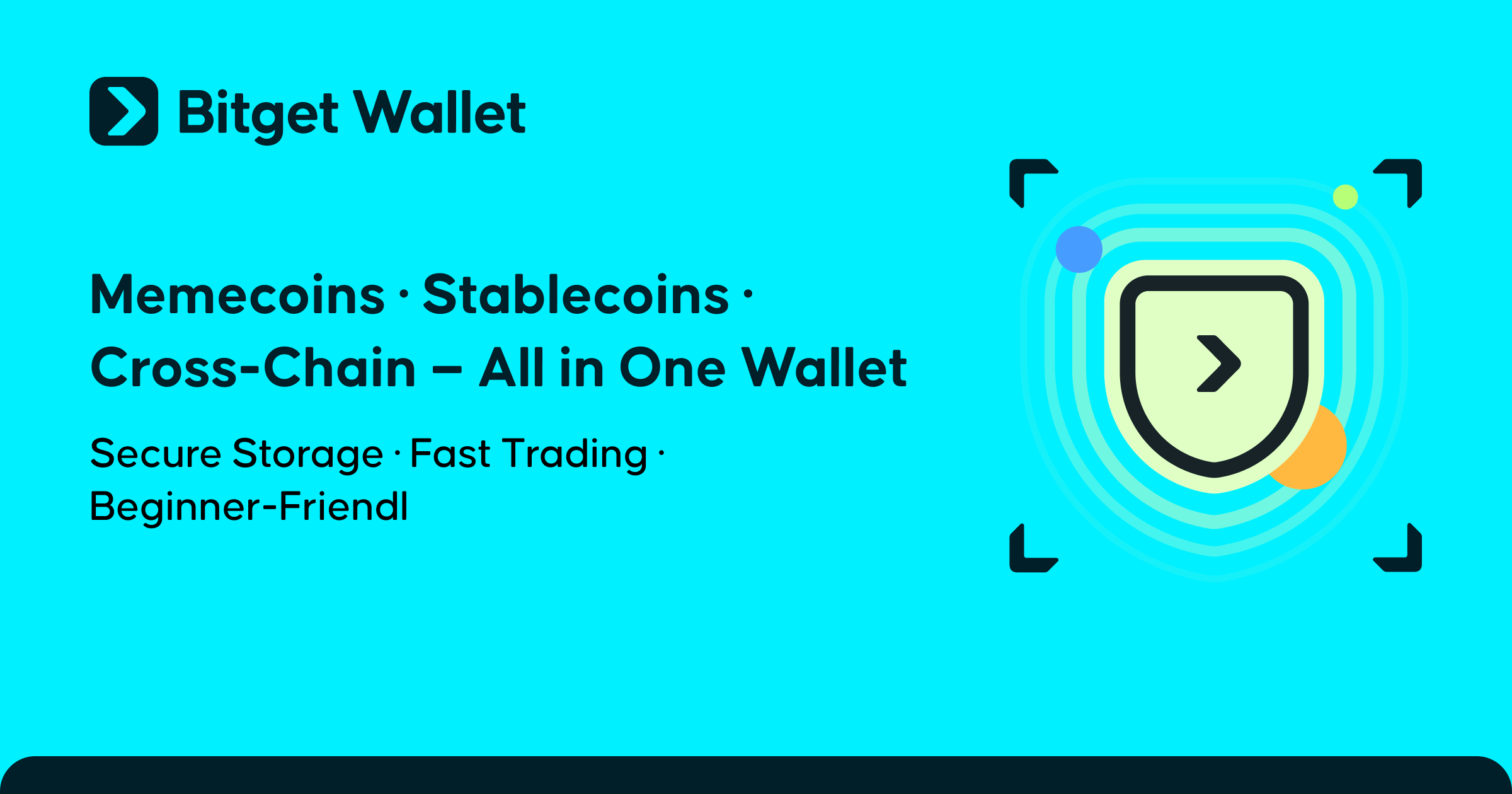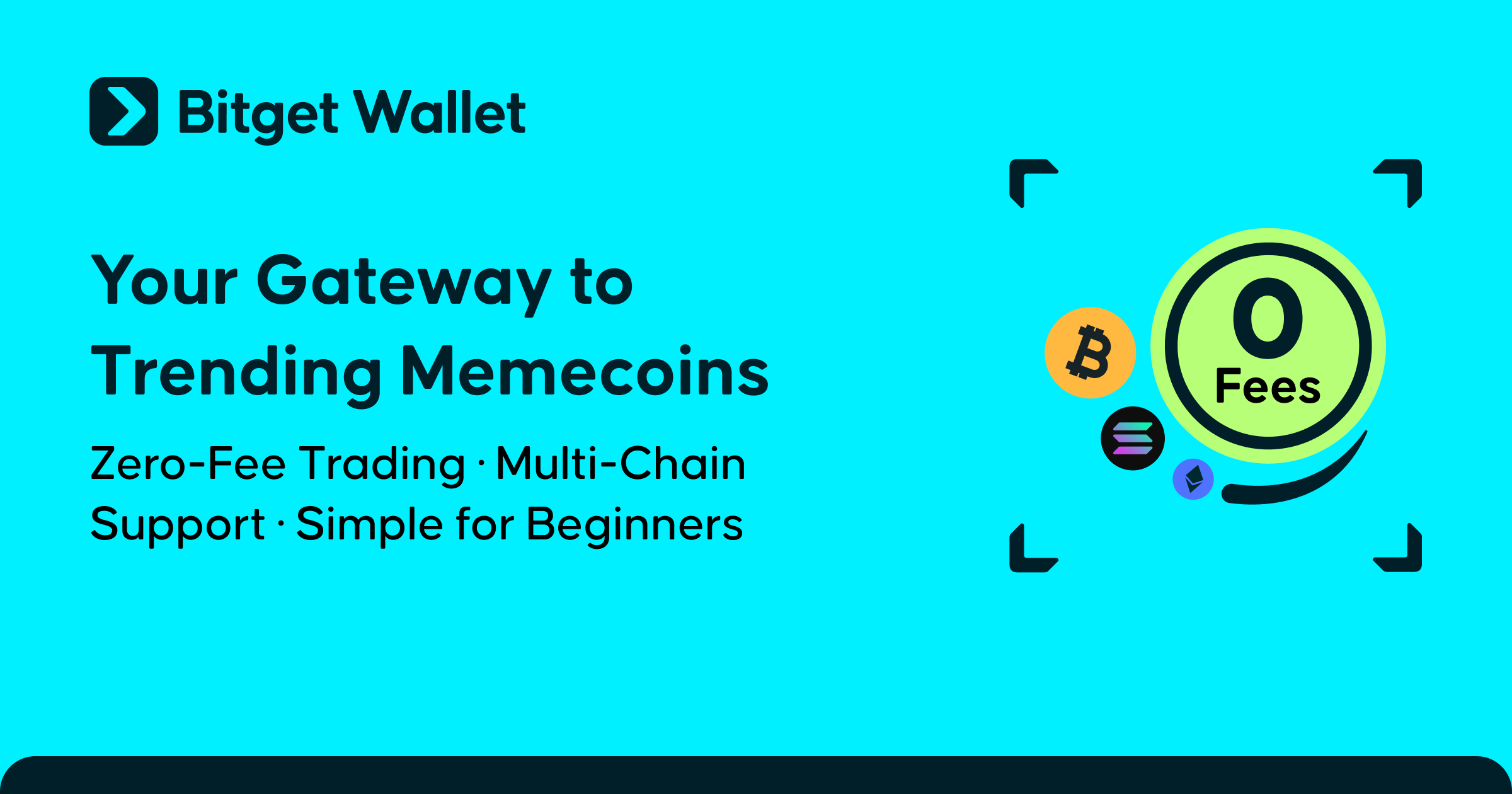What is Eclipse Mainnet? Token Price, Airdrop, and Launch Details

The emergence of data availability solutions has garnered a lot of attention in the crypto sector, especially after the launch of Celestia in October 2023. They provide a more modular approach to blockchain architecture by separating fundamental operations like transaction execution and data processing, thereby opening up tremendous opportunities for scalability and customization.
Following EigenDA, Avail, and Inco, Eclipse Network is another project riding this wave of innovation. But what exactly is the Eclipse Network, and how does it work?
This article will help answer those questions by going over its structure, funding, Eclipse token price, and recent mainnet launch. Stick around until the end to learn more about the highly anticipated Eclipse airdrop and how you can participate.
What Is Eclipse Mainnet?
Eclipse Mainnet is a revolutionary Layer-2 scaling solution built on Ethereum. Launched in November 2024, it distinguishes itself by being the first to integrate the Solana Virtual Machine (SVM) into the Ethereum ecosystem. This unique blend enables Eclipse to leverage the strengths of both blockchain systems.
Here's a breakdown of its key components:
-
Settlement: Ethereum provides the secure foundation for Eclipse. All transactions ultimately settle on the Ethereum mainnet, and ETH is used as the native gas token.
-
Execution: Eclipse utilizes the Solana Virtual Machine (SVM) for executing transactions. This helps unlock high throughput and parallel processing, thus resulting in faster and more affordable transactions.
-
Data availability: Celestia, a modular blockchain network, ensures scalable data availability for Eclipse. This guarantees the efficient and secure storage of transaction data.
-
Proving: Eclipse employs RISC Zero for generating zero-knowledge proofs (ZKPs). These proofs help verify transaction validity without revealing the underlying data, improving privacy and efficiency.
How Does Eclipse Network Work?

Eclipse Network achieves its outstanding performance by dividing its activities over several specialized components. For those unaware, this is the essence of “modular blockchain,” where the work of a blockchain network is separated into different parts and handled by different off-chain entities.
In the case of Eclipse Network, as briefly mentioned above, the project uses Solana Virtual Machine (SVM) as the execution layer, Celestia as the data availability layer, Ethereum as the authentication and consensus layer, and RISC Zero to generate ZKPs for verification. Let's find out how each of these parts works below:
Execution
Unlike the Ethereum Virtual Machine (EVM), which processes transactions sequentially, SVM enables parallel execution of unrelated transactions. This parallel processing capacity significantly improves transaction speed and overall throughput.
For developers who prefer the EVM, Eclipse offers compatibility through Neon EVM. This allows existing Ethereum dApps to move to Eclipse Network without requiring extensive code rewrites.
Data Availability
Celestia is a specialized blockchain designed to efficiently store and provide access to transaction data. This guarantees that transaction data is accessible even when some nodes go down.
Using Celestia greatly increases Eclipse's scalability and lowers transaction fees compared to storing all data on Ethereum.
Settlement And Consensus
With Ethereum serving as Eclipse Network's settlement and consensus layer, all transactions are ultimately finalized and protected on the Ethereum mainnet. Ethereum's robust security and decentralization provide a strong foundation for Eclipse.
Plus, leveraging Ethereum as the settlement layer allows Eclipse to tap into its massive liquidity and user base. Eclipse currently utilizes ETH as its native gas token, but it aims to support other tokens like USDC for gas fees in the future.
Proving
To maintain transaction integrity, Eclipse Network employs RISC Zero to generate ZKPs. These proofs cryptographically demonstrate that a transaction was successfully conducted without exposing any particular transaction information, thereby improving privacy and efficiency.
A fraud proof in Eclipse Network includes:
-
Commitment to the transaction input
-
Transaction data
-
Proof that re-executing the transaction would lead to a different output than the one recorded on the chain
Workflow Of Eclipse Network
Here's a step-by-step overview of how a transaction is processed on Eclipse Network:
-
Transaction creation: Users interact with dApps on Eclipse and initiate transactions.
-
Transaction ordering: A specialized node called a "sequencer" receives and orders these transactions.
-
Block production: The ordered transactions are processed by the execution environment (SVM), resulting in a new state of the network. Eclipse optimizes this process by only computing changes to the state (state diffs) rather than the entire state to avoid bottlenecks. This new block is then published to Celestia (DA layer), and state commitments are sent to Ethereum (settlement layer).
-
Transaction settlement: Using data attestations from Celestia and validity proofs from the sequencer, a smart contract on Ethereum verifies the correctness of the data. Then, a challenge period follows, similar to Optimistic Rollups. If no fraud proofs are submitted during this period, the new state is finalized and permanently recorded on Ethereum.
Discovering Eclipse Network’s Funding Scenario
Eclipse Network has received significant attention and financial support from prominent blockchain investors. The initiative has successfully raised $65 million in investment across two rounds. Specifically:
-
Seed round: In September 2022, Eclipse secured $15 million in a seed round led by Tribe Capital and Tabiya. This initial funding allowed the team to begin developing its innovative Layer-2 solution.
-
Series A round: More recently, in March 2024, Eclipse raised $50 million in a Series A funding round. This round was co-led by Placeholder and Hack VC, with participation from notable investors such as Polychain Capital, Delphi Digital, Maven 11, and Fenbushi Capital.
Does Eclipse Network Have A Token?
No, the Eclipse Network does not currently have its own native token. Rather than introducing a new token, Eclipse utilizes Ethereum's ETH as its primary gas token. So, when you hear someone talk about Eclipse token price, they are actually referring to ETH price movements.
This decision to leverage ETH improves the network's interoperability with Ethereum and simplifies the user experience by removing the need to acquire a separate token. Nevertheless, the project has mentioned the possibility of supporting other tokens, such as USDC, for gas fees in the future.
More about Ethereum (ETH) Wallet
Eclipse Airdrop: Your Ultimate Guide
While official details about an Eclipse Network airdrop haven't been released, the recent mainnet launch is a strong indicator that a reward program for early adopters could be on the horizon. Here's how you can position yourself to potentially maximize your rewards:
-
Completing Intract tasks: Eclipse has launched a campaign on Intract, a platform where you can complete tasks to earn rewards. Visit the Intract campaign page and connect your crypto wallet. Then, finish the listed tasks, which include activities like following Eclipse on social media, joining their Discord server, or engaging with their content.
-
Minting $tETH: You can also boost your chances of airdrop eligibility with this activity. To mint this token, you will need to obtain Liquid Replicated Tokens (LRTs) from other protocols. After that, connect your wallets, choose the LRT you want to exchange for $tETH, create a token pair, and click "Mint" to receive $tETH on the Eclipse network.
Keep an eye on Eclipse's official announcements and community channels for the latest updates on any potential airdrop programs. This includes following their X account, joining their Discord server, and regularly checking their website for updates.
For a seamless experience managing your digital assets and participating in airdrops, consider using a secure and user-friendly multi-chain crypto wallet like Bitget Wallet. With Bitget Wallet, you can easily store, manage, and trade your tokens across various blockchains, ensuring you're ready to collect any future Eclipse airdrop rewards.
- WLFI Token Buyback: How World Liberty Financial Uses Treasury Unlocks?2025-12-20 | 5 mins
- Cardano ETF Approval Timeline: When Could an $ADA ETF Finally Launch?2025-12-19 | 5 mins
- How to Create a Virtual Number for Telegram and Avoid Account Ban Risks2025-12-18 | 5 mins

















